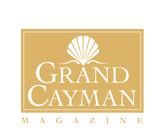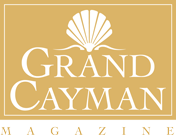One of the misconceptions about Grand Cayman Magazine, even after nearly a dozen years of publishing, is that it’s just another pretty face most comfortable on the coffee tables (pretty face up) of Cayman’s rich and stylish.

There’s some truth to that, but in the land of editors, words matter, and Grand Cayman Magazine has always placed the highest premium on including in its pages good writing (sometimes great) and articles with depth and breadth that go far beyond just shine and patina. More on that in a moment.
Nevertheless, the magazine you hold in your hand is one of the most attractive we have ever published, thanks in large measure to the magnificent photographs contributed by a number of the island’s most talented photographers.
Good, even great, photos, however, are not enough. The trick, as all wise art directors know, is that even the best photos, if not displayed well, are largely ineffective; they’re not impactful. There’s some truth to the axiom that even bad photos appear better bigger (assuming they’re in focus and cleverly or creatively cropped).
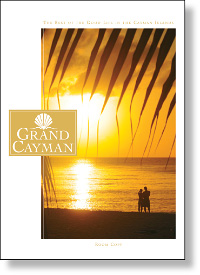
At Grand Cayman Magazine since its outset, the “look of the book” has been directed by a triumvirate of quality and design fanatics, including Art Director Richard Aldama, co-publisher Vicki Legge, and, of course, the editor, yours truly.
Before Richard Aldama joined Pinnacle Publishing (our parent company) more than 13 years ago, I personally used to hire and fire art directors with abandon.
The problem was that most designers succumb to designing more for themselves, or, even worse, for other designers, than for their actual audiences — not a good thing.
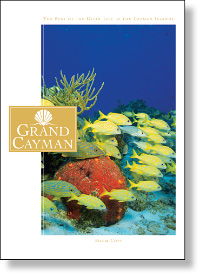
(On one occasion, I actually committed to “bonusing” an art director $5,000 if he didn’t win any design awards in his first year!)
In any event, the reason Grand Cayman Magazine presents so well is not by chance or happenstance. Readers may be interested to know that the cover which adorns this issue, for example, was not the first or only contender for that position.
For every issue we prepare perhaps 10 to 15 cover treatments before making our final choice. Incidentally, the cover is the only photo choice that is collaborative in that all three of us mentioned above have to come to a consensus.
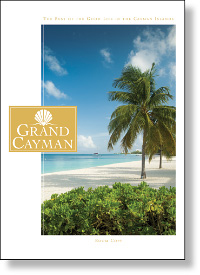
Other than that, we don’t design by committee and never, ever walk a cover image around the office (or anywhere else) to see what “other people think.” Photo editing is best done by dictators.
Further, no photo in Grand Cayman Magazine ever appears without at least a modicum of retouching, and that includes the hundreds of social pictures that appear in our popular “Shooting Stars” section. This process, now done digitally, of course, is extremely costly and time-consuming, but the result is “pictures that pop” – color-faithful (especially in the skin tones), bright with a reasonable amount of contrast.
Most magazines don’t go to this trouble and if you’ve ever wondered why many published photos look dark and “flat,” that’s why.
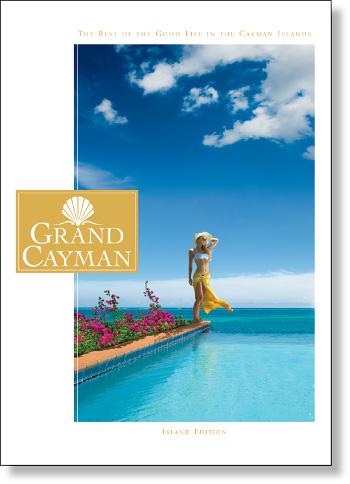
Two other factors – both expensive – contribute to the overall quality of Grand Cayman Magazine: One is our paper, the other is our printer.
We print on the highest quality magazine paper stock available. We could save a tidy sum if we were to go down a “grade” or two, and a casual reader might not even ever notice the difference. But we’ll never do it. What gives a magazine its tactile and visual appeal is largely the quality of its paper – its weight (heavier is better) and its color (whiter is better).
Both add to the cost and, even worse, heavier publications cost considerably more to mail. To an accountant, the choice is no choice at all: Use cheaper paper; to an editor (certainly this editor): No way.
And then there are our printers. For years we have worked with (and it is a collaboration) Nupress of Miami. Founder/Owner/President Ricky De La Vega and his team work longer hours than we do, and their standards are at least as high as our expectations. There are literally thousands of things that can go wrong in printing a single issue of a magazine and, perversely, they usually do – on deadline, at night, or over the weekend. Nupress makes them right.
Now, if you’ll transition with me, a few words – about words. One writer wasn’t wrong when he described the spoken word as the written word “down the drain.”
Trust me, and every writer knows this, it’s far easier to speak than it is to write, and it is endemic among writers to tell their stories, rather than write them. And why not? Most good writers are invariably good story tellers and, unlike writing, which is a solitary experience, telling a riveting story is an engaging and seductive one.
Nevertheless, all real writers eventually must abandon the lure of immediate response or applause, walk away from the bar or the microphone, and face the keyboard and the dreaded blank page.
Books are written on this subject, the best of which may be “The Courage to Create” by psychotherapist Rollo May and one even better, “The War of Art” by Steven Pressfield.
Three quotes from Pressfield’s book are worth pondering:
“If you find yourself asking yourself (and your friends), “Am I really a writer? Am I really an artist?” chances are you are. The counterfeit innovator is wildly self-confident. The real one is scared to death.”
Or, “The artist committing himself to his calling has volunteered for hell, whether he knows it or not. He will be dining for the duration on a diet of isolation, rejection, self-doubt, despair, ridicule, contempt, and humiliation.”
And, “The most important thing about art is to work. Nothing else matters except sitting down every day and trying.”
At Grand Cayman Magazine (and the other publications of Pinnacle Media), we revere our writers. They are at the top of our value chain, and we do our best to encourage them, to nurture them, to pay them well, and, above all, to provide an environment for them in which they understand they are welcome and appreciated. If the need should arise (as it too often does in the newspaper business) they will be defended and protected.
So yes, while Grand Cayman Magazine might be thought of primarily as publication of beauty – ah, no one pities the poor supermodel! – we would urge our readers to look (and read) deeper. A good place to search for periodical gold is our table of contents . . .
















